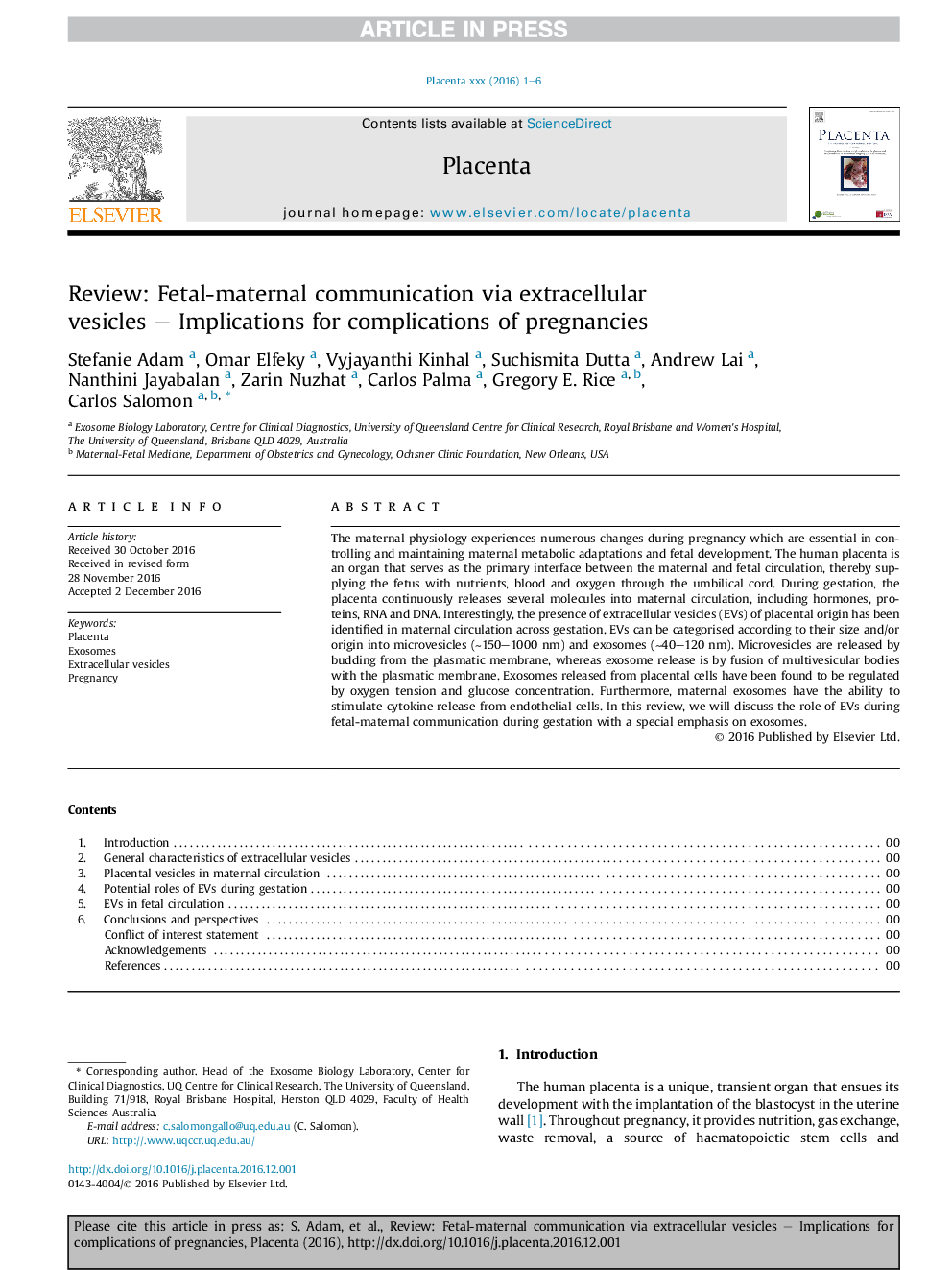| کد مقاله | کد نشریه | سال انتشار | مقاله انگلیسی | نسخه تمام متن |
|---|---|---|---|---|
| 5585970 | 1568554 | 2017 | 6 صفحه PDF | دانلود رایگان |
عنوان انگلیسی مقاله ISI
Review: Fetal-maternal communication via extracellular vesicles - Implications for complications of pregnancies
ترجمه فارسی عنوان
بررسی: ارتباط جنین و مادر با حاملهای خارج سلولی - پیامدهای عوارض حاملگی
دانلود مقاله + سفارش ترجمه
دانلود مقاله ISI انگلیسی
رایگان برای ایرانیان
کلمات کلیدی
موضوعات مرتبط
علوم زیستی و بیوفناوری
بیوشیمی، ژنتیک و زیست شناسی مولکولی
زیست شناسی تکاملی
چکیده انگلیسی
The maternal physiology experiences numerous changes during pregnancy which are essential in controlling and maintaining maternal metabolic adaptations and fetal development. The human placenta is an organ that serves as the primary interface between the maternal and fetal circulation, thereby supplying the fetus with nutrients, blood and oxygen through the umbilical cord. During gestation, the placenta continuously releases several molecules into maternal circulation, including hormones, proteins, RNA and DNA. Interestingly, the presence of extracellular vesicles (EVs) of placental origin has been identified in maternal circulation across gestation. EVs can be categorised according to their size and/or origin into microvesicles (â¼150-1000Â nm) and exosomes (â¼40-120Â nm). Microvesicles are released by budding from the plasmatic membrane, whereas exosome release is by fusion of multivesicular bodies with the plasmatic membrane. Exosomes released from placental cells have been found to be regulated by oxygen tension and glucose concentration. Furthermore, maternal exosomes have the ability to stimulate cytokine release from endothelial cells. In this review, we will discuss the role of EVs during fetal-maternal communication during gestation with a special emphasis on exosomes.
ناشر
Database: Elsevier - ScienceDirect (ساینس دایرکت)
Journal: Placenta - Volume 54, June 2017, Pages 83-88
Journal: Placenta - Volume 54, June 2017, Pages 83-88
نویسندگان
Stefanie Adam, Omar Elfeky, Vyjayanthi Kinhal, Suchismita Dutta, Andrew Lai, Nanthini Jayabalan, Zarin Nuzhat, Carlos Palma, Gregory E. Rice, Carlos Salomon,
